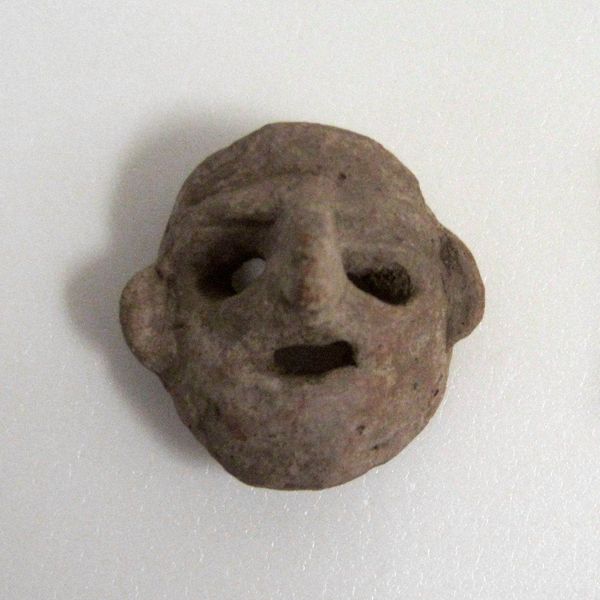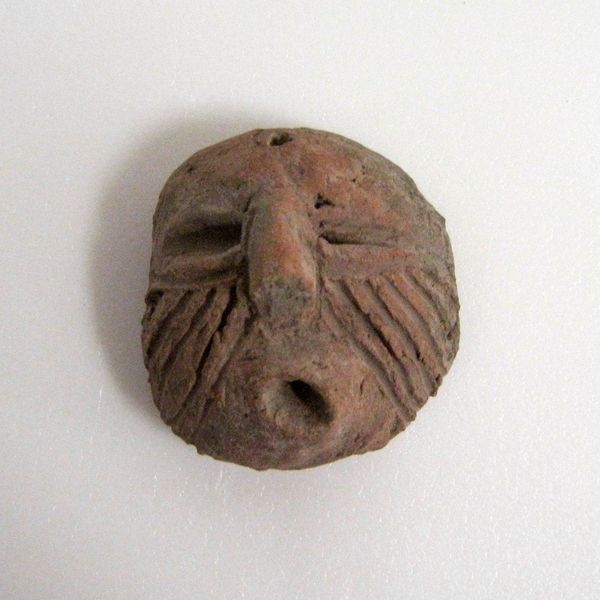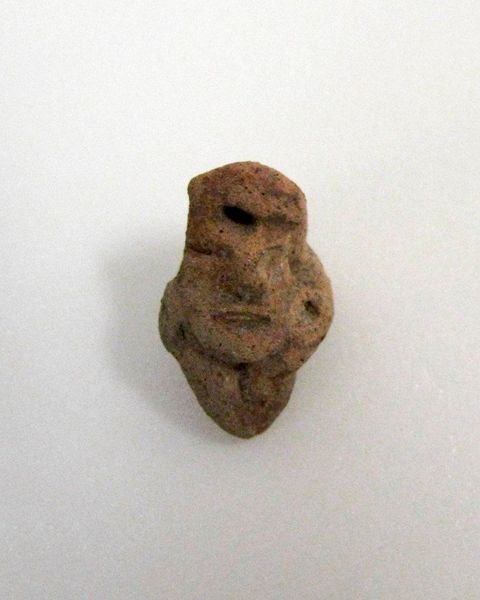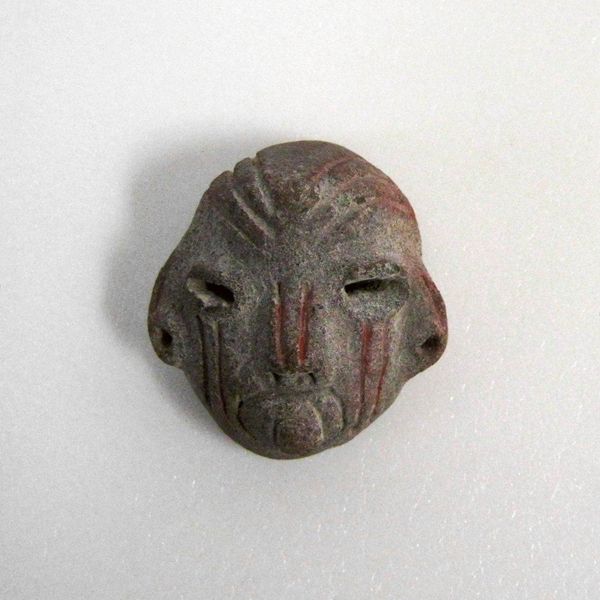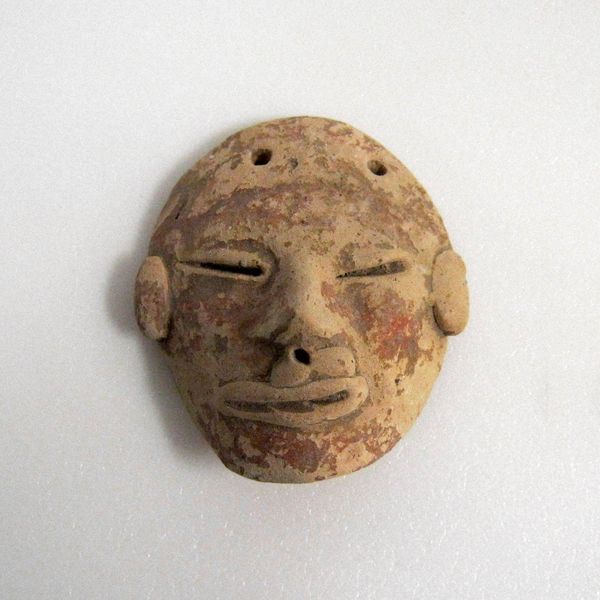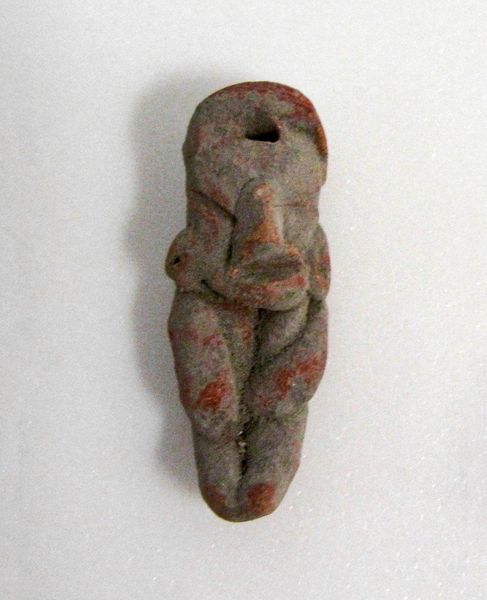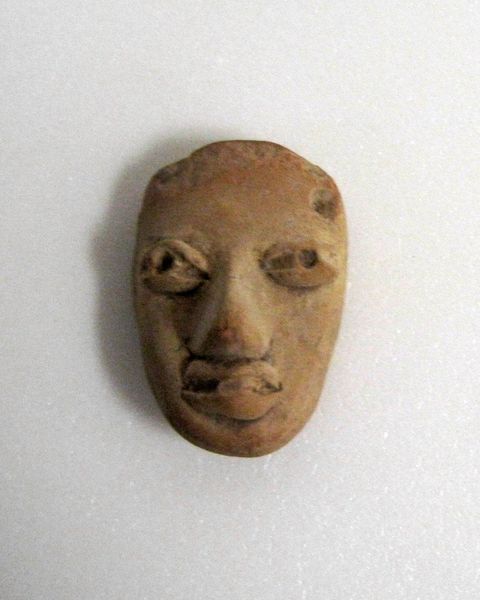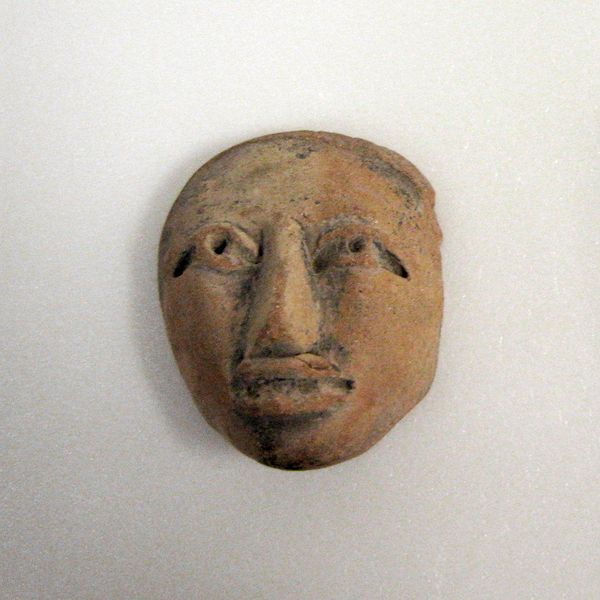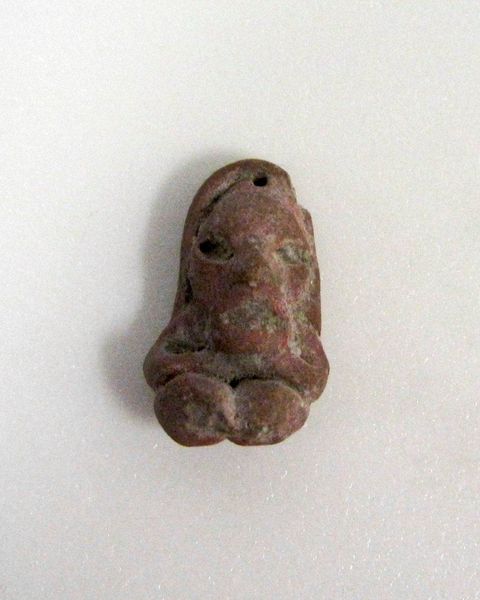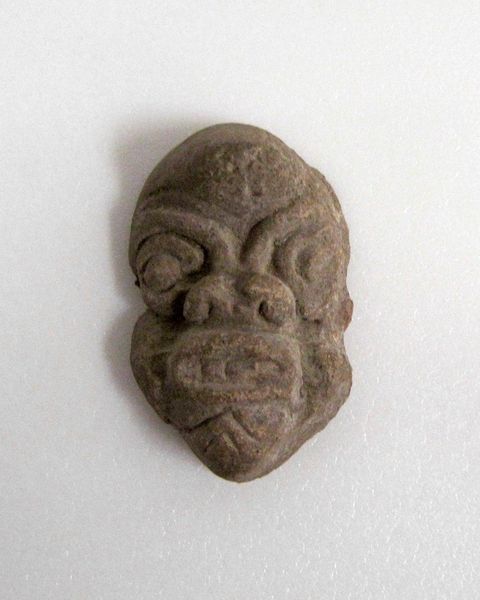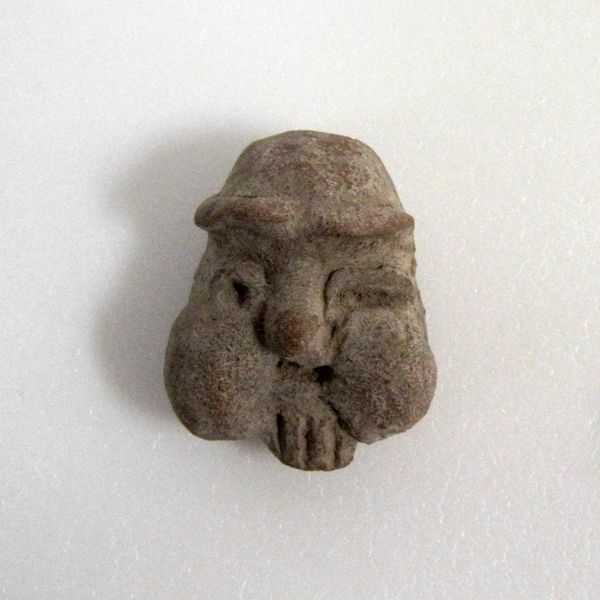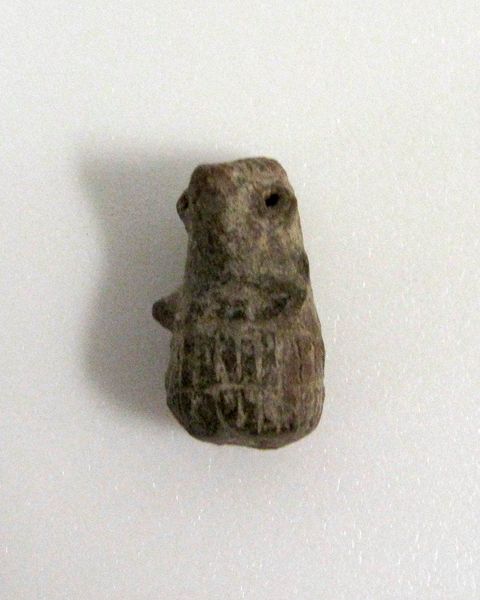
ceramic, earthenware, terracotta
#
sculpture
#
ceramic
#
earthenware
#
terracotta
Copyright: Public Domain
Editor: This miniature mask, created by the Tlatilco people around 1500, is crafted from ceramic earthenware. It's so small, and something about its simplicity feels very powerful. What strikes you when you look at it? Curator: Immediately, I’m drawn to the hands that shaped this earthenware. Think about the labor involved in digging the clay, processing it, and meticulously forming such a small, detailed piece. The firing process, too – what fuels were used, what social structures governed access to kilns? We need to see this mask not just as an aesthetic object, but as a product of a complex web of material resources and social relations. Editor: That's fascinating. I hadn't really considered the process so deeply. Does the size influence your view of the labor involved? Curator: Absolutely. Its miniature scale, in one sense, amplifies the labor involved, demanding a focused and controlled crafting practice. But in another, it forces us to consider its intended use. Was it meant for personal adornment, interred as part of a burial, or perhaps involved in trade or ritual practice? How does its purpose impact the material choices and the level of craftsmanship we see? Editor: It really reframes how I see the object. Thinking about the hands that shaped it, rather than just its face, really brings it to life. Curator: Precisely. It is about excavating layers of social and material history embedded within it, going beyond merely aesthetics and form. The goal is to reveal the networks of production and consumption. Editor: Thanks, I have a whole new understanding of what I am looking at now!
Comments
No comments
Be the first to comment and join the conversation on the ultimate creative platform.
